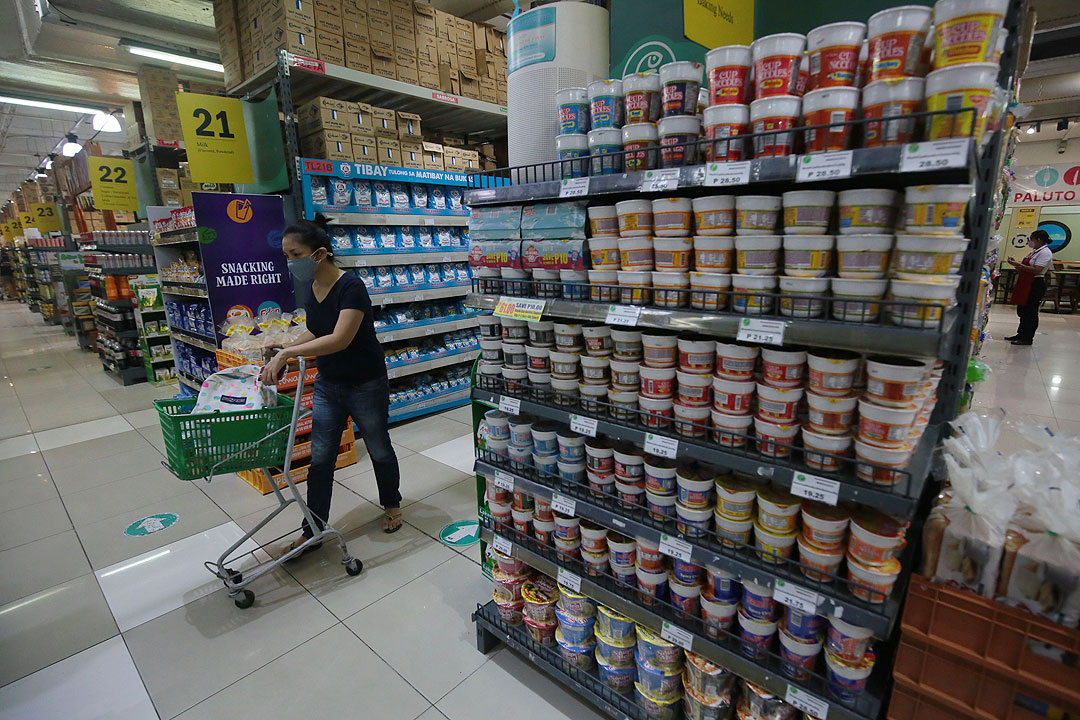WB: PHL inflation seen within 2-4% band each month of 2024

INFLATION in the Philippines may settle within the 2-4% target band for every month in 2024, the World Bank (WB) said, though it warned of the need to remain alert for risks to the inflation outlook.
At the 2024 International Tax Conference, World Bank Philippine Senior Economist Ralph van Doorn said containing inflation through both monetary and non-monetary measures remains the main challenge this year.
“We think it’s likely that inflation will stay over the whole year between 2-4%,” he told reporters on the sidelines of the event. “We know there are risks to it, but we’ll have to see if they materialize. If we see that these risks are becoming more concrete, then we will have to also make adjustments to our projections.”
The Philippine Statistics Authority reported that headline inflation decelerated to an over three-year low of 2.8% in January, marking the second straight month it fell within the Bangko Sentral ng Pilipinas (BSP) target range of 2-4%.
In its December update, the World Bank projected Philippine inflation to settle at 3.6% this year and 3% in 2025. The BSP expects inflation to average 3.6% this year and 3.2% in 2025.
Asked if easing inflation could prompt the BSP to cut borrowing costs, Mr. Van Doorn said it is difficult to forecast what the BSP will do.
“We have to really let the central bank do its job,” he said. “The BSP has a very data-driven approach, so it will look carefully at inflation, at underlying core inflation and inflation expectations before making a decision on rate cuts.”
The BSP has kept its benchmark interest rate unchanged at a 16-year high of 6.5% for three straight meetings. It had hiked rates by 450 basis points (bps) between May 2022 and October 2023 to tame inflation.
BSP Governor Eli M. Remolona, Jr. has said that the Monetary Board may consider a rate cut in the second half, but cited as a condition that inflation be firmly within the 2-4% target.
Mr. Van Doorn said the World Bank sees global and domestic risks for the Philippine economy this year.
“We see tensions and wars in various parts of the world, and that means this all could have an effect on supply chains, on food supply, on fuel prices,” he said.
“If that happens, it’s most likely to have an effect on many countries that import food and fuel, and the Philippines is one of them,” he said.
Another risk is that major central banks may keep their own monetary policy tighter for longer, as global inflation may be “stickier-than-expected,” which could affect the Philippines as well.
The BSP is widely expected to maintain an interest rate differential with the Federal Reserve to shield the peso from depreciation pressures and volatility.
The Fed has kept borrowing costs unchanged at 5.25-5.5% since September, following the combined 525 bps worth of rate hikes implemented between March 2022 and July 2023.
“Our third risk would be more of a domestic nature. We see the risk of El Niño, the impact it could have on the agricultural sector, and that could have an effect on the food supply and food prices,” Mr. Van Doorn said.
He also cited uncertainties like the proposed minimum wage hikes, which could stoke inflation and add pressure to inflation expectations.
“It’s important to be very careful in considering these wage hikes to make sure that inflation expectations remain anchored at between 2-4%,” he said.
Legislators have been considering whether to increase minimum wages in the private sector by P100.
Meanwhile, investments into the Philippines will be challenging this year due to a slower global growth outlook, he said.
“But we also see that that country has done a lot (to) attract investment, passing very important laws that promote investment competitiveness. It’s important to implement these and make sure investors know about it,” Mr. Van Doorn said.
The central bank reported that net inflows of foreign direct investment (FDI) grew 27.8% year on year to $1.048 billion in November.
This was the highest FDI net inflow level recorded for an individual month since the $2.662 billion posted in December 2021.
Month on month, net FDI inflows rose 60% from $655 million in October.
The BSP projects FDI net inflows of $8 billion by the end of 2023 and $10 billion at the end of 2024.
Separately, Finance Secretary Ralph G. Recto met with World Bank Group Managing Director and Chief Financial Officer Anshula Kant to discuss how to improve the bank’s lending terms for the Philippines and identify potential areas for partnership.
“The World Bank committed to introducing innovative financial instruments tailored to the needs of the Philippines,” the Department of Finance (DoF) said in a statement on Tuesday.
“These include instruments specifically designed to sharpen the country’s crisis toolkit to ensure swift access to funding during times of emergency,” it said.
The DoF and the World Bank reiterated their strong commitment to boost the government’s socioeconomic agenda through their partnership, the DoF added. — Keisha B. Ta-asan



